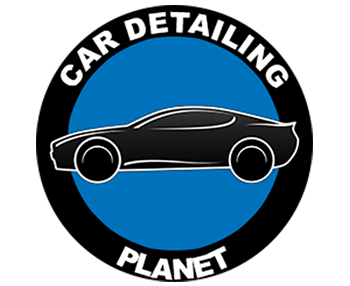
The winter months are just a harsh time of year for our vehicles. Not only are the roads slicker, filthier, and more unpredictable, but our vehicles take more damage amongst the snow, ice, and mag-chloride.
While you simply can’t avoid the weather on any given day, it is important to remove mag-chloride from your vehicle regularly to keep it in good condition all winter long. Over time, magnesium chloride can cause damage to the paint, metal, and other parts of your vehicle. If you live in an area where mag-chloride is used on the roads, it is important to wash your vehicle frequently during the winter months.
What Is Mag-Chloride and Why Is It Used?

Mag-chloride is a chemical compound that is commonly used as a deicer on highways and roads during winter. It is a salt that is effective in melting ice and snow but can also be corrosive to metal surfaces. The salt makeup of this mixture has many uses, but the greatest use is that it reduces the freezing point of water. When heavily applied to snow and ice, mag-chloride lowers the freezing temperature of water to 5° F, 27° lower than the standard freezing point.
Many people wonder why departments of transportation don’t just use rock salt or sodium chloride, compounds that are way less damaging to vehicles on the highways.
While rock salt and sodium chloride help melt ice, they only reduce the freezing temperature to 15° F. Additionally, rock salt is highly corrosive to concrete, making mag-chloride a more effective approach, able to be applied in both moderate and extreme temperature drops.
You can tell if magnesium chloride has come into contact with your vehicle by its thin, filmy, white appearance, usually the most noticeable along the bottom half and underside of your vehicle. If mag-chloride gets on your vehicle, it’s important to remove it as soon as possible to avoid any damage.
How to Remove Mag-Chloride From Your Vehicle
Although removing mag-chloride from your vehicle is not very difficult, it is important to perform it several times throughout the winter season. Every time you drive the highways during the winter months, your vehicle will most likely come into contact with this corrosive stuff. Simply put, one wash won’t protect your vehicle all winter long.
If you’re up for removing mag-chloride from your vehicle yourself, take the following steps:
- Rinse your car off with cold water as soon as you can after mag-chloride has come into contact with it. You can agitate the mag-chloride stains with a soft microfiber wash mitt and soapy water but don’t scrub too aggressively. Using snow foam is a much safer way than using a wash mitt.
- If the mag-chloride is stubborn or is more noticeable in some areas, mix equal parts water and white vinegar in a bucket or spray bottle and apply directly, rinsing off as you go.
- When the entire vehicle has seen your soapy wash mitt, rinse the vehicle in its entirety. Then, dry your car completely with a clean microfiber towel. Wring out your towel when it leaves water behind, and replace the towel with a fresh one when dirt or grime inevitably accumulates.
- Wax your car to protect the paint and metal from future corrosion. Wax will also act as a protective barrier from other debris that is flung onto the vehicle, such as small rocks or sand particles.
Pay Special Mind to the Vehicle’s Undercarriage

While we rarely look at the undercarriage of our vehicles, mag-chloride will be the most noticeable there, as this is where it will accumulate the most. When performing mag-chloride removal via the steps above, be sure to give the undercarriage a good rinse with cold water and your soap before moving on to rinsing and drying the rest of the vehicle. If mag-chloride has had time to dry and harden on the undercarriage, you can use a garden hose with a spray attachment to power through the grime.
If mag-chloride has caused any corrosion on your vehicle’s undercarriage, it is important to have it repaired as soon as possible by a professional. Left unaddressed, corrosion can cause serious damage to your vehicle that is expensive to repair.
Related: Guide on Washing Car Undercarriage
Removing mag-chloride from your vehicle is an important part of keeping your car in good condition during the winter months. By paying special attention to the undercarriage, you can avoid serious damage and extend the life of your vehicle.
Why an Auto Wash Won’t Tackle Your Mag-Chloride Removal Properly

Although mag-chloride is corrosive, it can be removed with a few simple household ingredients and some elbow grease. However, taking your car through an automatic car wash will not effectively remove mag-chloride.
The brushes in an automatic car wash are not designed to agitate and remove the mag-chloride, and the chemical used in the wash will not break down the mag-chloride. In fact, it will likely just be redistributed around your vehicle during the wash process. In the end, automatic car washes will do more harm than good for your car.
If you’re looking for a quick way to remove mag-chloride from your vehicle, an auto wash is not the answer. For a thorough cleaning that will remove the mag-chloride and protect your vehicle from future corrosion, it is best to wash your car by hand following the steps above or by hiring an experienced auto detailer.
Not only will an auto detailer have the proper cleaning products, tools, and techniques to properly perform the job, but they will brace the harsh winter weather for you and leave your car looking and feeling like new!
This article was written by Double Take Mobile Detailing, a Denver car detailing operation that takes pride in their experience, customer service, and high auto detailing standards.
